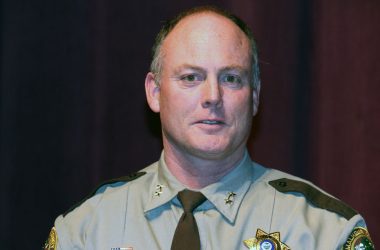
 A number of booths and special activities were all part of the annual Malheur Experiment Station and Farm Festival last week. One of the events included a demonstration regarding the different types of soils in the valley and how they help farmers. (The Enterprise/Pat Caldwell)
A number of booths and special activities were all part of the annual Malheur Experiment Station and Farm Festival last week. One of the events included a demonstration regarding the different types of soils in the valley and how they help farmers. (The Enterprise/Pat Caldwell)By Pat Caldwell
Malheur Enterprise
ONTARIO – A sizeable crowd including youth from the Ontario Boys and Girls Club descended on the Malheur Experiment Station last week for its annual field day and farm festival.
The event, which offered a host of activities and demonstrations related to agriculture, was sponsored by local organizations including the experiment station, the Ontario Chamber of Commerce, area watershed councils and irrigation districts and the Malheur County Soil and Water Conservation District.
The annual event is a good way to showcase the experiment station, director Clint Shock said.
“It gets us out in front of the public,” he said.
The field day and the farm festival is very much a cooperative effort, Ontario Chamber of Commerce director John Breidenbach said.
“It’s a great thing. We have 16 booths this year,” he said.
Breidenbach said the combined event puts a needed focus on agriculture.
“It’s important because we get to showcase the importance of agriculture, the backbone of our community,” he said.
The event showcased an onion production tour, a presentation on herbicides for weed control in potatoes and sweet potatoes, and a tour that focused on alternative crops.
Another draw for the event was a session on unmanned aircraft systems and how drones can be used in agriculture, presented by Empire Unmanned, a Hayden, Idaho firm.
“We have operations in Washington, Idaho, Utah, Colorado, throughout the Pacific Northwest,” said Ron Looney, the director of operations for the company.
Looney’s presentation stressed Empire Unmanned’s uses for agriculturists. The firm uses drones and a process called photogrammetry – the science of creating measurements from photos – for mapping, engineering and structural inspections. In agriculture, the unmanned aircraft can be used to inspect and appraise crops and give farmers critical data to help them succeed.
“It’s all about the data. We can, for example, come out and get an overall view of your crop and fields and then find out where your crop is stressing,” Looney said.
Looney said his firm’s drones also can tell a farmer whether his programs – for, example, fertilizing – are working.
“We can deliver those things in a few minutes,” he said. “And within 24 hours we have the data to the farmer. It is good information.”
Through the use of a laptop, Looney – who is a licensed helicopter pilot and flew Apache gunships during the War on Terror – can pilot one of the drones used by the company over a field of crops and collect information.
The only major issue obstacle when flying the drones comes from hawks.
“Hawks do attack it,” he said.
Once, he said, a hawk attacked a drone, grabbed the small camera from the nose of the vehicle and flew away. Looney and his team never found the camera. Looney also pointed out several talon marks on one of the drones on display.
“But is really all about collecting data,” he said.
Along with Looney’s presentation, spectators also heard several speakers discuss topics ranging from the Owyhee Canyonlands national monument proposal to creeping bentgrass and food safety.




